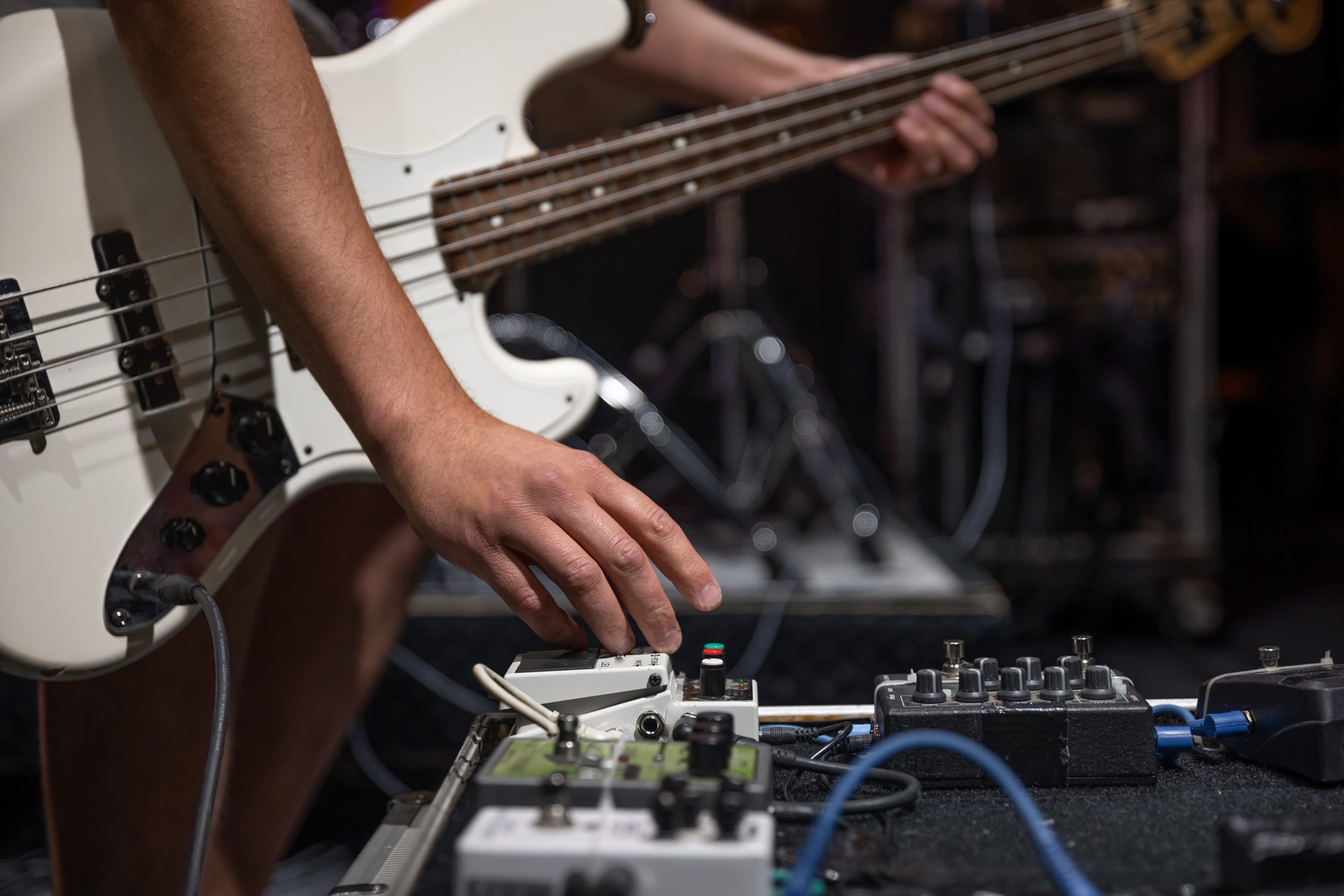KEY TAKEAWAYS
- A guitar or bass pedalboard is an enclosure to house all of your various effects pedals from Voodoo Lab and other companies.
- These accessories are not just for storage, however, as they also work to power each pedal in the signal chain, such as wah pedals, delay pedals, volume pedals, and overdrive pedals.
- Arrange the pedals in various configurations within the board for unique tonal possibilities.
If you are new to guitar effects, you may wonder what is a pedal board. Many of the best guitars, after all, integrate with a vast array of effects pedals, but all of those connections can get complicated, which is where pedalboards come in. So why arrange the best guitar pedals in a pedal board, and what exactly is a pedal board anyways? Keep reading to find out.
What is a Guitar Pedal Board?
When learning all about Stevie Ray Vaughan’s pedals, for instance, you likely realize the sheer number of pedals that existed in his rig. This is only possible with the use of a pedal board, even if you have learned the best bass effects pedals. Pedalboards are standalone devices that both organize and power your pedals, from the best reverb pedal and beyond. These are available in a number of unique configurations to suit modern players, even if you just learned the definition of a loop pedal.
Benefits of Using a Pedal Board
If you are just using a single pedal, such as your favorite fuzz pedal or distortion pedal, a pedal board doesn’t make that much sense. As you increase your pedal collection, however, the benefits become clear.
Organization
First and foremost, these boards organize your pedals, allowing you a bird’s eye view of your whole guitar rig setup as you perform or practice. As long as your pedals are inside of the board, all you have to do is pack the board up and put it away after a gig. This simplifies the process as, before pedal boards, you’d have to stack a bunch of pedals together in a bag and hope for the best.
Power
Another primary use of a pedal board is to actually power your pedals, so you don’t have to hold onto dozens of power cables at all times. Most pedalboards include a dedicated circuit included within. You plug each pedal into the circuit and then plug the board itself into a power outlet, thus powering all of your pedals at once. Guitar pedals tend to use standardized power inputs, so most boards are universal.
Unique Arrangements
Guitar effects pedals create unique tonal possibilities depending on how they are arranged. Luckily, pedalboards make it easy to mix and match the location and placement of your various pedals for unique effects.
Pedalboard Definition FAQs
How to set up your first pedalboard?
The first step here is to arrange a number of pedals and then plug them into the board’s power unit. After that, plug the board into a wall outlet.
In what order do you place pedals on a pedalboard?
There is no right way to arrange the pedals, as each configuration leads to unique sounds. In other words, feel free to place your delay pedals, volume pedals, and chorus pedals however you like.
How much do pedalboards cost?
This truly depends on the size and features on offer and the type of cable management available. Generally speaking, pedalboards start at around $50 and go all the way up to $500 or more for ultra-large models with space for numerous individual pedals.
STAT:
“Most effects pedals are powered by varying levels of DC voltage, depending on the manufacturer. Possible voltages include 9V, 12V, 15V, 18V, 24V, and 40V, though 9V is most common.” (source)
TIP: Make sure your preferred pedalboard is large enough to accommodate your entire setup all in one go.
Sources:
https://en.wikipedia.org/wiki/Guitar_pedalboard
https://blog.andertons.co.uk/learn/how-to-set-up-your-first-pedalboard
https://westcoastpedalboard.com/
https://www.aclamguitars.com/smartblog/36_the-secret-to-choose-your-pedalboards-size.html
https://guitarspace.org/sound-pedals/top-ten-best-guitar-pedal-boards-on-the-market-today/
























